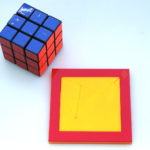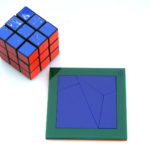Well, I sold my first batch of puzzles (the triangle and greek cross puzzles) and have moved on to more difficult ones. Henry Dudeney, brilliant guy that he is, came up with a dissection for turning a square into a pentagon and you can read about his method and the misprint I found in the diagram accompanying his solution here.
I also found a dissection for turning a square into a hexagon by Harry Lindgren. He wrote about it in the November, 1961 issue of Scientific American and I found it through this link which unfortunately misspells Lindgren’s name as “Lindgreen” here and then it gets misspelled again as “Lundgren” here. But anyhow, it’s a really clever dissection and I went and made a bunch.
I also found another square-to-hexagon dissection that’s much older than Lindgren’s. A Belgian mathematician by the name of Paul Busschop came up with one in the late 1800’s and here is a Wolfram demonstration of it. In case you’re interested, there is a wonderful and detailed geometric construction for this dissection here. It attributes this approach to E. Lucas in 1891 but I think that is a mistake because this link to Google Books’ online version of “Dissections: Plane and Fancy” by Greg N. Frederickson gives some background on Busschop and claims, “However Catalan was kind enough to supply Busschop’s full manuscript to Edouard Lucas, who included the dissection in (Lucas 1883).” History is complicated; I’ll stick with math.
So without further ado, here are pictures of the pentagon and hexagon dissection puzzles I made:
(As usual, I put a Rubik’s Cube in the picture for scale.)
More pictures of the puzzles and a little more info (e.g., links to their solution) are on my Items for Sale page.


